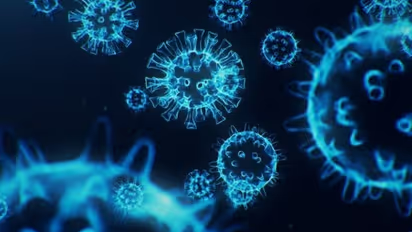Study reveals 3D printed vaccine patch provides greater protection than traditional shots

Synopsis
According to the study, the subsequent immune reaction from the patch was ten times greater than a vaccine given into the arm muscle using a needle.
Scientists have created a three-dimensional (3D) printed vaccination patch that is less unpleasant and intrusive than a regular vaccine and delivers more protection than a standard immunisation injection. In their testing, a team from Stanford University and the University of North Carolina at Chapel Hill (UNC) in the United States put the vaccination patch directly on the skin of animals. According to the study, the subsequent immune reaction from the patch was ten times greater than a vaccine given into the arm muscle using a needle. The findings were published in the journal Proceedings of the National Academy of Sciences.
The approach employs 3D-printed tiny needles lined up on a polymer patch and are long enough to reach the skin to administer the vaccination. "By developing this approach, we want to set the basis for even more rapid global development of vaccines, at lower doses, and in a pain- and anxiety-free manner," stated Stanford University professor and lead author Joseph M DeSimone.
Also Read | COVID-19 pandemic reduced life expectancy by most since World War II: Oxford study
The new vaccine's simplicity of use and efficacy may pave the way for a fresh method of administering painless, less invasive, and self-administered vaccinations. According to the study findings, the vaccination patch elicited a substantial T-cell and antigen-specific antibody response that was significantly higher than an injection given via the skin. According to the researchers, this increased immune response could reduce vaccine doses because a microneedle vaccine patch uses a smaller dose to generate a similar immune response to a needle-delivered vaccine.
The work solves previous problems in that the microneedles may be readily customised to produce multiple vaccination patches for the flu, measles, hepatitis, or COVID-19 using 3D printing. The COVID-19 epidemic has served as a harsh reminder of the impact that timely immunisation may have. Getting a vaccination, on the other hand, usually necessitates a trip to a clinic or hospital.
Also Read | COVID-19 virus evolving to get better at becoming airborne: Study
On the other hand, the vaccination patches can contain vaccine-coated microneedles that dissolve into the skin, can be transported anywhere in the globe without special processing, and individuals can apply the patch themselves, according to the researchers. The simplicity of use of a vaccine patch, according to the researchers, may also contribute to greater immunisation rates. The team is now developing RNA vaccines into microneedle patches for future testing, similar to the COVID-19 vaccines developed by Pfizer and Moderna.
Check the Breaking News Today and Latest News from across India and around the world. Stay updated with the latest World News and global developments from politics to economy and current affairs. Get in-depth coverage of China News, Europe News, Pakistan News, and South Asia News, along with top headlines from the UK and US. Follow expert analysis, international trends, and breaking updates from around the globe. Download the Asianet News Official App from the Android Play Store and iPhone App Store for accurate and timely news updates anytime, anywhere.